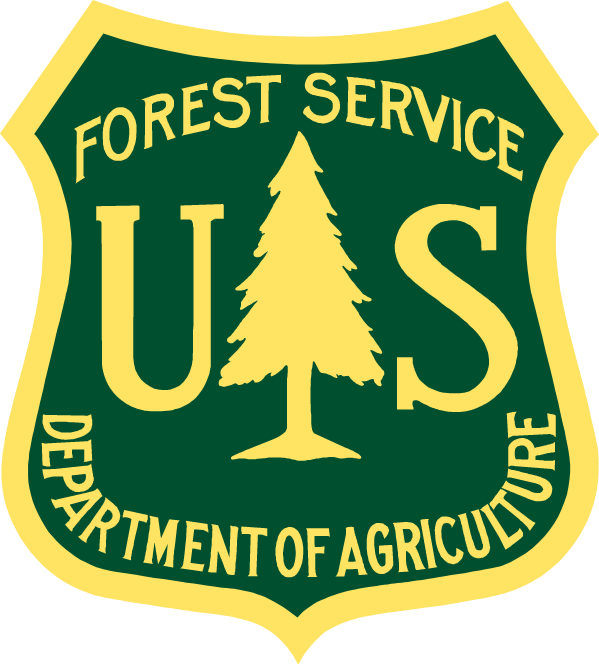Advance Notice of Proposed Rulemaking; Request for Comments.(Deadline)
Tuesday, June 20, 2023 (12:00 AM - 8:00 PM) (EDT)
Description
Advance notice of proposed rulemaking; request for comment.
SUMMARY:
The United States Department of Agriculture (USDA), Forest Service is inviting public feedback and initiating Tribal consultation on the following topic and additional questions: Given that climate change and related stressors are resulting in increasing impacts with rapid and variable rates of change on national forests and grasslands, how should the Forest Service adapt current policies to protect, conserve, and manage the national forests and grasslands for climate resilience, so that the Agency can provide for ecological integrity and support social and economic sustainability over time?DATES:
Comments must be received in writing by June 20, 2023.
ADDRESSES:
You may send comments by any of the following methods:
• Preferred: Federal eRulemaking Portal www.regulations.gov.
• Mail: Director, Policy Office, 201 14th Street SW, Mailstop 1108, Washington, DC 20250–1124.
All comments received will be posted to www.regulations.gov, including any personal information provided. The public may inspect comments received at www.regulations.gov. Do not submit any information you consider to be private, Confidential Business Information (CBI), or other information, the disclosure of which is restricted by statute.
FOR FURTHER INFORMATION CONTACT:
Christopher Swanston, Director, Office of Sustainability and Climate, (202) 205–0822. Individuals who use telecommunication devices for the deaf (TDD) may call the Federal Information Relay Service at 1–800–877–8339 24 hours a day, every day of the year, including holidays.
SUPPLEMENTARY INFORMATION:
Background
This advance notice of proposed rulemaking (ANPRM):
• Builds on ongoing work to implement section 2 of Executive Order (E.O.) 14072, Strengthening the Nation's Forests, Communities, and Local Economies (87 FR 24851, April 22, 2022), including input received from Tribal consultation and public comment on the recent Request for Information (RFI) (87 FR 42493, July 15, 2022) on mature and old-growth forest definition, identification, and inventory. E.O. 14072 calls particular attention to the importance of Mature and Old-Growth (MOG) forests on Federal lands for their role in contributing to nature-based climate solutions by storing large amounts of carbon and increasing biodiversity.
• Is consistent with and intended to support implementation of Secretary Vilsack's Memo 1077–044, Climate Resilience and Carbon Stewardship of America's National Forests and Grasslands (Secretary's Memo) ( https://www.usda.gov/directives/sm-1077-004), and the USDA Forest Service's Wildfire Crisis Strategy, Climate Adaptation Plan, and Reforestation Strategy for the National Forest System (https://www.fs.usda.gov/managing-land/wildfire-crisis).
• Builds on the 2012 National Forest System Land Management Planning Rule (Planning Rule) at 36 CFR part 219 (https://www.fs.usda.gov/planningrule), which requires that revised Forest Service land management plans provide for ecological, social, and economic sustainability. The Planning Rule also created an adaptive management framework for land management planning, including assessment, plan revision or amendment, and monitoring.
- Uses the Planning Rule's definitions of ecological integrity and social and economic sustainability to structure the concept of climate resilience. Climate resilience is essential for ecological integrity and social and economic sustainability.
- Reflects the Forest Service's commitment to continual learning and organizational improvement by engaging people in conserving forests and grasslands under threat of loss due to climate change.
Climate change is leading to increasingly extreme storms and droughts, extensive pest and disease occurrence, more widespread chronic stress, and shifting fire regimes across forests and grasslands in the United States. Climate change also amplifies other existing stresses, including those from historic forest management and fire suppression approaches. Increasing activity and development within the wildland-urban interface further adds to these stressors, leading to increasingly rapid degradation of the health and ecological integrity of our forests and grasslands.
More ecosystems and watersheds are becoming vulnerable to severe disturbance, with some geographies and ecosystem types experiencing more rapid and compounding impacts than others. Some ecosystem services provided by forests are functioning, while others are at significant risk. In some places, high severity burns are resulting in long-term loss of forest cover, along with the loss of associated plant and animal communities dependent upon those forest ecosystems, including MOG-forest communities and at-risk species. In other places, climate change threatens the persistence of current forest types in some portions of their historical range.
National Forest management reflects what the American people desire from their natural resources at any given point in time. In response, management of the National Forest System (NFS) has evolved over the Forest Service's 118-year history. The Forest Reserve Act of 1891 shifted Federal land policy from a focus on transferring land out of Federal ownership to a focus on conservation and sustainability. Beginning with the Organic Act of 1897, the Federal Government shifted the focus of forest management towards: (1) improving and protecting forests; (2) securing favorable conditions for water flows ( i.e., protecting watersheds); and (3) furnishing a continual supply of timber.
These laws led to a period of custodial management from roughly 1905 to 1939 when the American people sought to reduce destructive and wasteful use of forest resources (see Figure 1). The onset of World War II (WWII) opened an era with an emphasis on increased timber production to support the war effort and post-war housing needs. Another shift began to occur in the 1960s with greater environmental awareness. The Multiple Use-Sustained Yield Act (MUSYA) of 1960 instructed the agency to equally balance outdoor recreation, range, timber, watersheds, fish, and wildlife with a greater emphasis on accountability to a broader group of stakeholders, establishing the regime the Forest Service must manage under today. Additionally, the National Forest Management Act (NFMA) enacted in 1976 gives the Secretary of Agriculture broad authority to manage all forests that are in imminent danger of insect attack or disease and instructs the Secretary to comply with MUSYA. The NFMA instructs the Secretary to use new research to protect the Nation's natural resources including soil, water, and air resources as well as the future productivity of renewable resources.
High harvest levels continued into the early 1990s. Over the following decades, National Forest System management continued to evolve with new environmental laws and regulations. In the 1990s and early 2000s, multiple attempts were made to revise the Forest Service's 1982 Land Management Planning Rule to better reflect the Agency's continued learning and shifts in management priorities and needs. Those years also saw rising costs of wildfire suppression as a proportion of the Forest Service's budget, as climate change and increases in the numbers of people and value of infrastructure in the wildland-urban interface exacerbated challenges from past fire suppression, drought, insects, and disease.
In 2012, USDA and the Forest Service published a new Planning Rule (77 FR 21162, April 9, 2012), which required that land management plans provide for ecological sustainability and contribute to social and economic sustainability, using public input and the best available scientific information to inform plan decisions. The 2012 Planning Rule contained a strong emphasis on protecting and enhancing water resources, restoring land and water ecosystems, and providing ecological conditions to support the diversity of plant and animal communities, while providing for ecosystem services and multiple uses. It explicitly recognized climate change as one of the challenges for land management into the future.
The Forest Service currently integrates forest restoration, climate resilience, watershed protection, wildlife conservation, and opportunities to contribute to vibrant local economies, along with continued and growing investments with a focus on equity and partnerships. In recent years the impacts of climate change as a system driver have become even clearer. The risks and costs associated with high-severity wildfires have also continued to grow. This ANPRM reflects these management priorities and challenges.
To put this evolution of National Forest System management into context, currently the Forest Service commercially harvests one tenth of one percent of acres within the National Forest System each year. Harvests designed to improve stand health and resilience by reducing forest density or removing trees damaged by insect or disease make up 86 percent of those acres. The remainder are final or regeneration harvests that are designed to be followed by reforestation.
At the same time, over the past 15 years data shows that disturbance driven primarily by wildfire and insect and disease has adversely impacted more than 25 percent of the 193 million acres across the National Forest System (see Figure 2). This rapidly changing environment is now the primary driver of forest loss and type conversion. Wildfire alone causes approximately 80 percent of reforestation needs on National Forest System lands, and we expect those needs to continue to grow: More than half of the 4 million acres of potential reforestation needs on National Forest System lands stems from wildfires in 2020 and 2021 (see Figure 3).



Updated and continually evolving science and better understanding of Indigenous Knowledge (IK) are helping the Agency to clarify these vulnerabilities and threats. This improved clarity, combined with innovations in resource inventory, data visualization, and risk assessment also help to inform and prioritize conservation, adaptive management, policies, and actions.
The Forest Service is actively developing and deploying spatially explicit tools to better support climate-informed decision-making, in line with the Secretary's Memo 1077–044, Climate Resilience and Carbon Stewardship of America's National Forests and Grasslands.
The Secretary's Memo directs the Forest Service to spatially identify wildfire and climate change-driven threats and risks to key resources and values in the National Forest System, including water and watersheds, biodiversity and species at risk, forest carbon, and reforestation. Further, section 2 of E.O. 14072 specifically directs Federal agencies to identify mature and old forests on Forest Service and Bureau of Land Management (BLM) lands.
Through this ANPRM, USDA is sharing the beta version of a new Forest Service Climate Risk Viewer (https://storymaps.arcgis.com/collections/87744e6b06c74e82916b9b11da218d28) for public feedback (see Section 1 below). This beta version was developed with 38 high-quality datasets and begins to illustrate the overlap of multiple resource values with climate exposure and vulnerability. The viewer also includes current management direction on National Forest System lands. The viewer allows for a place-based analysis of the need for climate adaptation to maintain, restore, and expand valued forest ecosystem and watershed characteristics. Additionally, the viewer supports identification of gaps between current management and potential conservation and adaptation practices. The beta version of the mature and old-growth (MOG) inventory that is being developed pursuant to E.O. 14072 and the RFI for MOG is also being released to help inform policy and decision-making on how best to conserve, foster, and expand the values of mature and old-growth forests on our Federal lands. Core information from the MOG inventory has been integrated into the viewer.
The Secretary's Memo called for additional fireshed data layers to inform investments under the Forest Service's Wildfire Crisis Strategy (WCS) ( https://www.fs.usda.gov/managing-land/wildfire-crisis), which clearly lays out risks to people, communities, and ecosystem health related to wildfire and sets forth a strategy for mitigating and recovering from those risks. The WCS is a core component of the Forest Service's Climate Adaptation Plan, which involves reducing risk of catastrophic wildfire in the near term and creates time and opportunity to foster long-term climate resilience in these ecosystems.
In January 2023, USDA and the Forest Service announced FY 2023 investments in 11 new landscapes for wildfire risk reduction, along with additional investments in the 10 initial landscapes announced in April 2022. These 11 new landscapes were prioritized after a review of new data layers developed pursuant to the Secretary's Memo that included a focus on protecting critical infrastructure, public water sources, and at-risk species habitat; equity; and proximity to Tribal lands, in addition to wildfire exposure to home and buildings. Consistent with the President's E.O. 14072, the importance of mature and old-growth forests were recognized and the Agency highlighted that the science around large tree retention and conservation is part of its fuels reduction strategy.
This ANPRM continues the Agency and Department's commitment to climate-adapted approaches to conserve the nations forests and grasslands. We invite public input and Tribal consultation on how the Agency can continue to adapt current policies and management and develop new policies and practices for conservation and climate resilience to support ecologic, social and economic sustainability in light of climate change, human induced changes, and other stressors.
Additional information pertaining to Forest Service sustainability and climate initiatives can be found here: https://www.fs.usda.gov/managing-land/sc.
Comments Requested
Climate change and related stressors, such as wildfire, drought, insects and disease, extreme weather events, and chronic stress on ecosystems are resulting in increasing impacts with rapid and variable rates of change on national forests and grasslands. These impacts can be compounded by fire suppression, development in the Wildland Urban Interface (WUI), and non-climate informed timber harvest and reforestation practices.
Multiple Forest Service plans, policies, and regulations already include direction on climate adaptation. However, given (1) increasing rates of change, and (2) new information and ways of assessing and visualizing risk, USDA and the Forest Service are issuing this ANPRM to seek input on how we can develop new policies or build on current policies to improve our ability to foster climate resilience, recognizing that impacts are different in different places across the country.
We are interested in public feedback and requests for Tribal consultation on a range of potential options to adapt current policies or develop new policies and actions to better anticipate, identify, and respond to rapidly changing conditions associated with climate-amplified impacts. Overarching questions include:
- How should the Forest Service adapt current policies and develop new policies and actions to conserve and manage the national forests and grasslands for climate resilience, so that the Agency can provide for ecological integrity and support social and economic sustainability over time?
• How should the Forest Service assess, plan for and prioritize conservation and climate resilience at different organizational levels of planning and management of the National Forest System ( e.g., national strategic direction and planning; regional and unit planning, projects and activities)?
- What kinds of conservation, management or adaptation practices may be effective at fostering climate resilience on forests and grasslands at different geographic scales?
- How should Forest Service management, partnerships, and investments consider cross-jurisdictional impacts of stressors to forest and grassland resilience at a landscape scale, including activities in the WUI?
- What are key outcome-based performance measures and indicators that would help the Agency track changing conditions, test assumptions, evaluate effectiveness, and inform continued adaptive management?
Examples, comments, and Tribal consultation would be especially helpful on the following topics:
1. Relying on Best Available Science, including Indigenous Knowledge (IK), to Inform Agency Decision Making.
a. How can the Forest Service braid together IK and western science to improve and strengthen our management practices and policies to promote climate resilience? What changes to Agency policy are needed to improve our ability to integrate IK for climate resilience—for example, how might we update current direction on best available scientific information to integrate IK, including in the Forest Service Handbook (FSH) Section 1909.12?
b. How can Forest Service land managers better operationalize adaptive management given rapid current and projected rates of change, and potential uncertainty for portions of the National Forest System?
c. Specifically for the Forest Service Climate Risk Viewer (described above), what other data layers might be useful, and how should the Forest Service use this tool to inform policy?
2. Adaptation Planning and Practices. How might explicit, intentional adaptation planning and practices for climate resilience on the National Forest System be exemplified, understanding the need for differences in approach at different organizational levels, at different ecological scales, and in different ecosystems?
a. Adaptation Planning:
i. How should the Forest Service implement the 2012 Planning Rule under a rapidly changing climate, including for assessments, development of plan components, and related monitoring?
1. How might the Forest Service use management and geographic areas for watershed conservation, at-risk species conservation and wildlife connectivity, carbon stewardship, and mature and old-growth forest conservation?
ii. How might the Forest Service think about complementing unit-level plans with planning at other scales, such as watershed, landscape, regional, ecoregional, or national scales?
a. Adaptation Practices:
i. How might the Agency maintain or foster climate resilience for a suite of key ecosystem values including water and watersheds, biodiversity and species at risk, forest carbon uptake and storage, and mature and old-growth forests, in addition to overall ecological integrity? What are effective adaptation practices to protect those values? How should trade-offs be evaluated, when necessary?
ii. How can the Forest Service mitigate risks to and support investments in resilience for multiple uses and ecosystem services? For example, how should the Forest Service think about the resilience of recreation infrastructure and access; source drinking water areas; and critical infrastructure in an era of climate change and other stressors?
iii. How should the Forest Service address the significant and growing need for post-disaster response, recovery, reforestation and restoration, including to mitigate cascading disasters (for example, post-fire flooding, landslides, and reburns)?
iv. How might Forest Service land managers build on work with partners to implement adaptation practices on National Forest System lands and in the WUI that can support climate resilience across jurisdictional boundaries, including opportunities to build on and expand Tribal co-stewardship?
v. Eastern forests have not been subject to the dramatic wildfire events and severe droughts occurring in the west, but eastern forests are also experiencing extreme weather events and chronic stress, including from insects and disease, while continuing to rebound from historic management and land use changes. Are there changes or additions to policy and management specific to conservation and climate resilience for forests in the east that the Forest Service should consider?
3. Mature and Old Growth Forests. The inventory required by E.O. 14072 demonstrated that the Forest Service manages an extensive, ecologically diverse mature and old-growth forest estate. Older forests often exhibit structures and functions that contribute ecosystem resilience to climate change. Along with unique ecological values, these older forests reflect diverse Tribal, spiritual, cultural, and social values, many of which also translate into local economic benefits.
Per direction in E.O. 14072, this section builds on the RFI to seek public input on policy options to help the Forest Service manage for future resilience of old and mature forest characteristics. Today there are concerns about the durability, distribution, and redundancy of these systems, given changing climate, as well as past and current management practices, including ecologically inappropriate vegetation management and fire suppression practices. Recent science shows severe and increasing rates of ecosystem degradation and tree mortality from climate-amplified stressors. Older tree mortality due to wildfire, insects and disease is occurring in all management categories.
The Forest Service is analyzing threats to mature and old-growth forests to support policy development to reduce those threats and foster climate resilience. Today's challenge for the Forest Service is how to maintain and grow older forest conditions while improving and expanding their distribution and protecting them from the increasing threats posed by climate change and other stressors, in the context of its multiple-use mandate.
a. How might the Forest Service use the mature and old-growth forest inventory (directed by E.O. 14072) together with analyzing threats and risks to determine and prioritize when, where, and how different types of management will best enable retention and expansion of mature and old-growth forests over time?
b. Given our current understanding of the threats to the amount and distribution of mature and old-growth forest conditions, what policy, management, or practices would enhance ecosystem resilience and distribution of these conditions under a changing climate?
4. Fostering Social and Economic Climate Resilience.
a. How might the Forest Service better identify and consider how the effects of climate change on National Forest System lands impact Tribes, communities, and rural economies?
b. How can the Forest Service better support adaptive capacity for underserved communities and ensure equitable investments in climate resilience, consistent with the Forest Service's Climate Adaptation Plan, Equity Action Plan and Tribal Action Plan?
c. How might the Forest Service better connect or leverage the contribution of State, Private and Tribal programs to conservation and climate resilience across multiple jurisdictions, including in urban areas and with Tribes, state, local and private landowners?
d. How might the Forest Service improve coordination with Tribes, communities, and other agencies to support complementary efforts across jurisdictional boundaries?
e. How might the Forest Service better support diversified forest economies to help make forest dependent communities more resilient to changing economic and ecological conditions?
Christopher French,
Deputy Chief, National Forest System, Forest Service.
June 20th 2023


